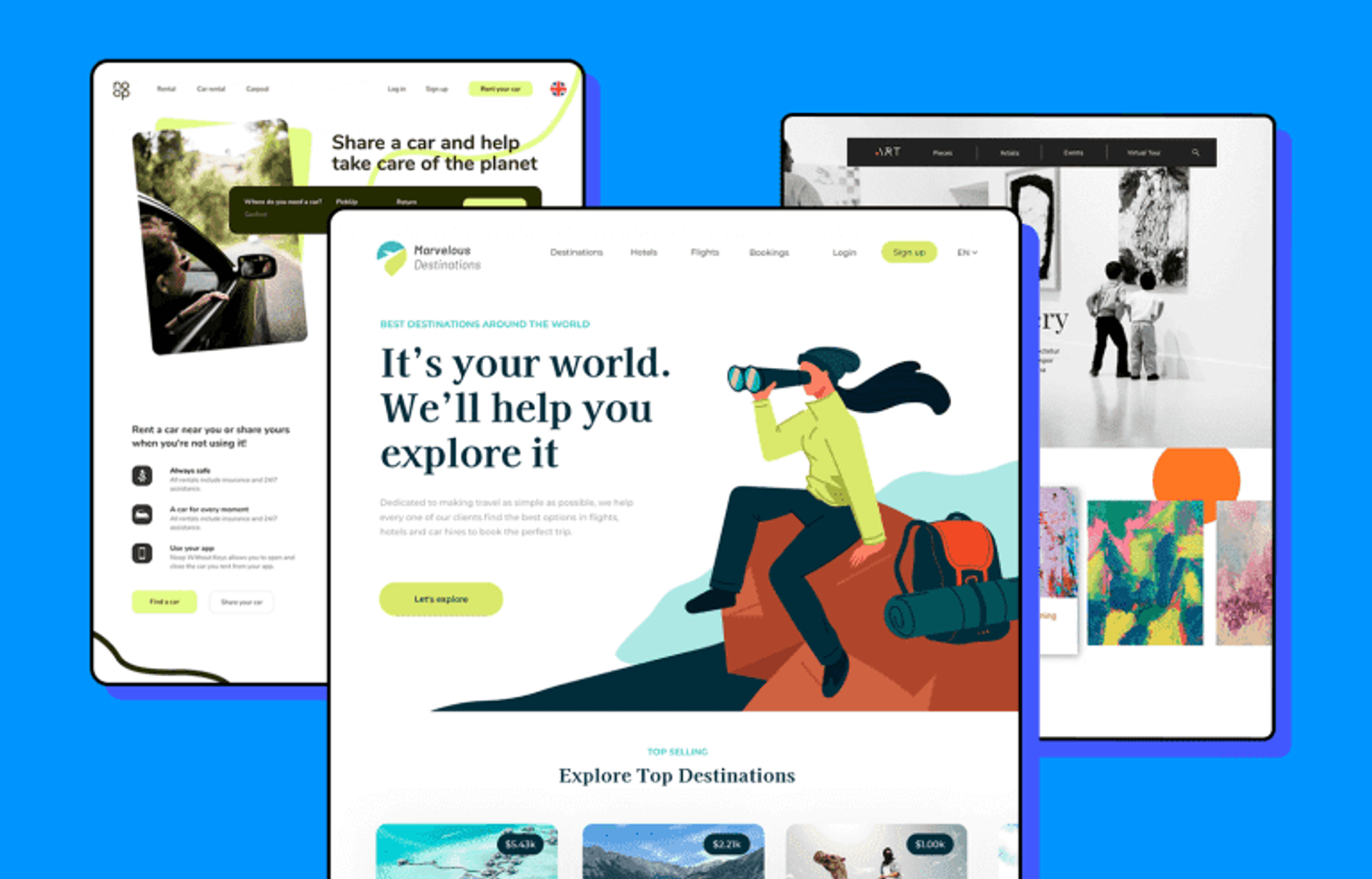The Very Best Sorts Of Website Design to Improve Customer Experience and Involvement
In the ever-evolving landscape of digital interaction, the efficiency of Web design significantly influences user experience and interaction. Different style strategies, such as minimalist, responsive, and interactive layouts, each offer distinct advantages that can cater to diverse individual requirements.
Minimal Website Design
As digital landscapes become increasingly chaotic, minimalist Web layout has actually become a powerful method to enhancing user experience. This design philosophy focuses on simpleness, concentrating on important elements while eliminating unnecessary distractions. By utilizing enough white space, straightforward navigating, and a minimal color combination, minimal layout fosters quality and routes customer attention to vital content.
The core concept of minimal Web style is to create a smooth communication for users. By decreasing cognitive load, customers can promptly comprehend information without really feeling bewildered. This straight technique not only enhances usability however also urges engagement, as site visitors are most likely to discover a site that is visually attractive and easy to navigate.
Additionally, minimalist design commonly emphasizes typography and images, utilizing these elements tactically to communicate messages successfully. In significance, minimal Web layout is not simply a fad; it is a thoughtful approach that identifies the value of user-centered layout.
Receptive Web Layout
In today's varied digital setting, receptive website design has actually come to be essential for creating a seamless user experience across a multitude of tools. As customers gain access to web sites on smart devices, laptop computers, desktop computers, and tablets, the capability of a web site to adapt its design and content to different display dimensions and resolutions is critical.
Receptive Web style employs flexible grids, images, and CSS media questions to make sure that Web material is provided efficiently, no matter the tool made use of. This technique not just boosts the aesthetic appeal of a website but additionally dramatically enhances usability. Customers are most likely to involve with a website that provides a regular experience, as it removes the frustration of needing to zoom in or scroll exceedingly.
By embracing receptive design, services can boost their visibility and get to a broader audience. In recap, receptive Web style is a basic technique that enhances customer experience, involvement, and overall fulfillment.
Interactive Web Design
Responsive Web layout prepares for enhancing individual experience, yet interactive website design takes this an action additionally by involving users in a more dynamic method - Aligned Position Web Design. By including elements such as animations, clickable prototypes, and real-time comments, interactive Web style astounds customers, attracting them right into a richer browsing experience
This approach not just fosters involvement but also encourages users to check out content actively instead of passively consuming it. Methods such as gamification, where customers earn incentives for finishing jobs, can significantly enhance the time invested in a website and boost total satisfaction. Interactive functions can simplify complex information, making it a lot more enjoyable and digestible.

Incorporating interactive design aspects can likewise cause higher conversion prices, as users are most likely to involve with a website that proactively involves them. Aligned Position Web Design. Eventually, interactive visit our website website design transforms individual experiences right into memorable journeys, guaranteeing that site visitors return time after time
Apartment Layout
Identified by its minimalistic approach, flat design emphasizes simplicity and functionality, removing unnecessary elements and concentrating on vital functions. This style ideology focuses on use, ensuring that users can navigate user interfaces with convenience and performance. By using a tidy visual, flat layout removes the mess usually located in extra elaborate styles, consequently improving individual emphasis on web content and functionality.
The characteristic of flat design depends on its usage of bold shades, simple typography, and geometric forms. These components add to a visually appealing user interface that is both modern-day and approachable. Furthermore, flat layout promotes a sense of quality, permitting users to recognize vital actions Bonuses and details without distraction.
Furthermore, flat layout is particularly efficient in responsive Web layout, as its simpleness converts well throughout numerous devices and screen dimensions. By concentrating on important functions, flat layout not just fulfills customer requirements but likewise encourages seamless interaction, making it a crucial part of effective Web style methods.
Flexible Website Design
Adaptive website design personalizes the individual experience by developing numerous fixed layouts tailored to different screen sizes and gadgets. Unlike responsive style, which fluidly changes a solitary design, flexible style utilizes unique designs for certain breakpoints, making certain optimal discussion on numerous systems. This strategy permits developers to concentrate on the one-of-a-kind features of each tool, boosting use by supplying specifically what customers require based upon their context.
Among the main advantages of adaptive website design is its ability to optimize lots times and efficiency. By offering tailored content and images that fit the customer's tool, websites can minimize information use and boost loading rates. This is specifically advantageous for users with slower links or restricted data strategies.

Additionally, adaptive layout facilitates a much more constant and regulated branding experience. Because developers develop multiple designs, they can make certain that the visual aspects align with the brand's identity throughout various systems - Aligned Position Web Design. This results in a cohesive user experience, enhancing involvement and promoting individual retention
Conclusion
Finally, the integration of minimal, receptive, and interactive website design principles significantly improves individual experience and involvement. Minimal layout fosters clarity and focus, while responsive style makes sure flexibility throughout numerous tools, advertising accessibility. Interactive design captivates users with vibrant aspects, urging expedition and learn this here now customization. Jointly, these style approaches contribute to the development of easy to use atmospheres that not only improve complete satisfaction however also drive higher conversion prices, emphasizing their vital value in contemporary Web design techniques.

Minimal style promotes quality and emphasis, while receptive layout makes certain adaptability across different gadgets, advertising access. Jointly, these layout comes close to add to the development of straightforward settings that not just boost satisfaction but also drive higher conversion prices, emphasizing their critical importance in modern Web style methods.